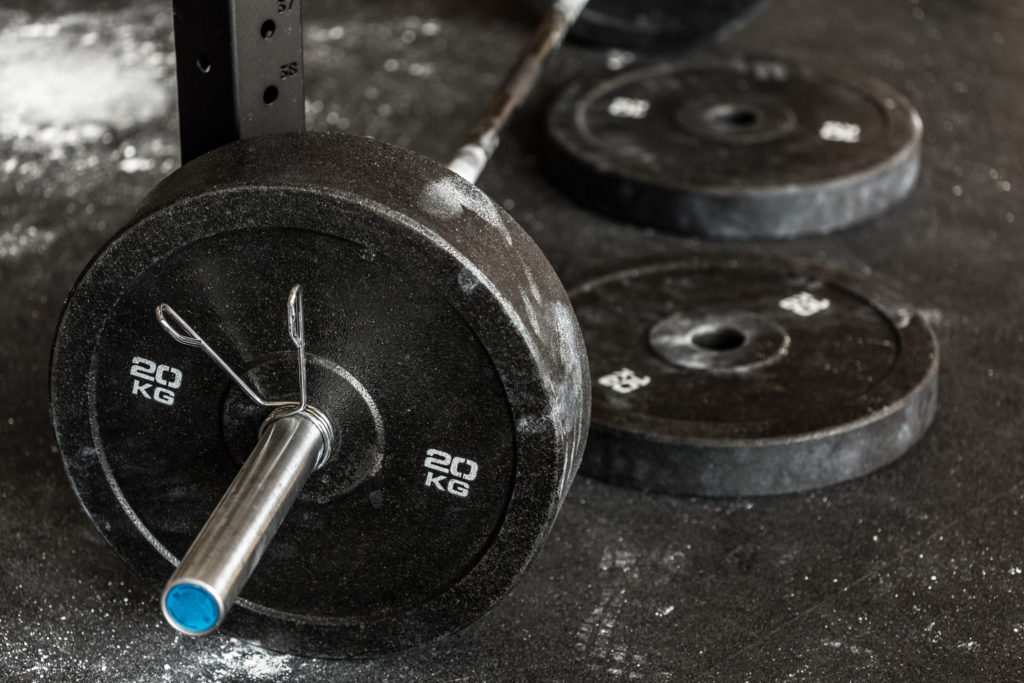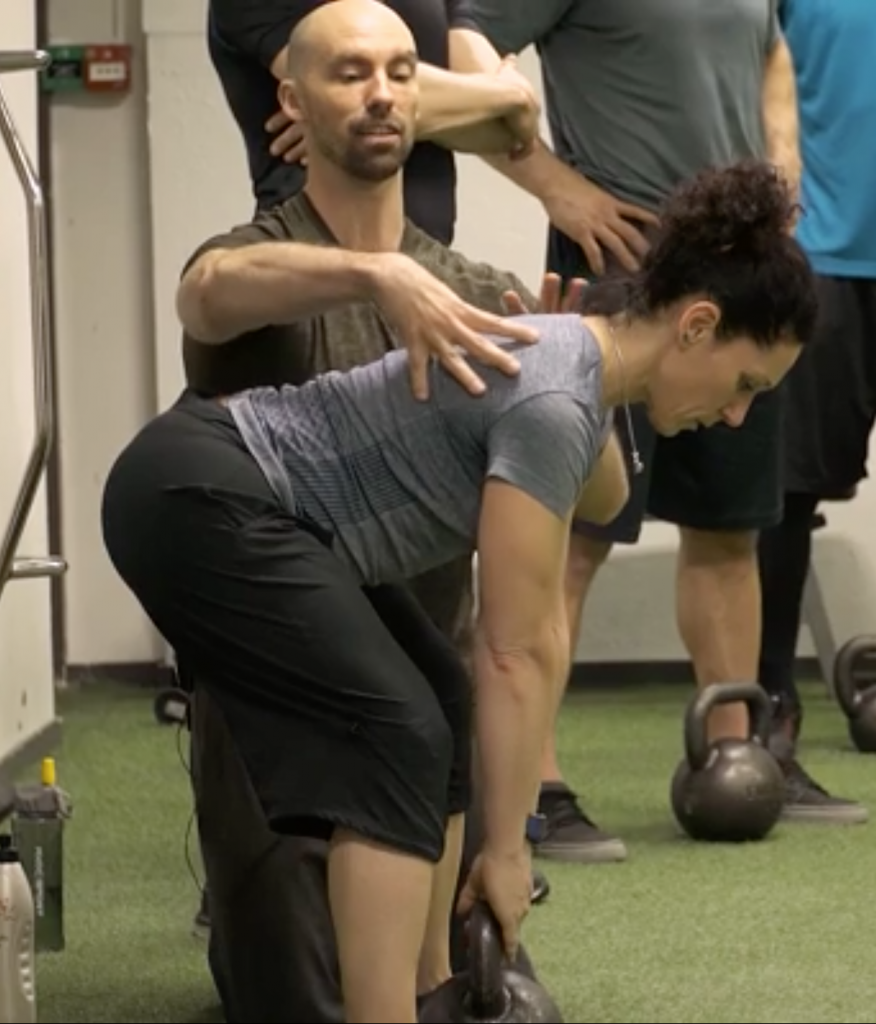The internet is a funny place. Regardless of the topic – Presidential elections, Black Lives Matter vs. All Lives Matter, GMOs, or debating the original Star Wars trilogy vs. the prequels1 – people tend to marry themselves to extremes. They’re either way over on the left or way the eff over on the right.
There’s very little middle-ground, when it’s the “middle ground” where the answer almost always resides.
I think my fitness and strength & conditioning bubble personifies this sentiment and is very applicable…especially when the topic revolves around the deadlift.

Some people feel the deadlift is the exercise to perform and is a compliment to everything: improved strength, muscle mass, athletic performance, posture, movement quality (dissociating hip movement from lumbar movement), and a whole host of other benefits including the answer to global warming and erectile dysfunction.
Others feel the deadlift – any variation of it – is the worst exercise ever, that no one should perform it under any circumstance, and that it will cause the world markets to collapse (not to mention everyone’s spine).2
This frustrates me.
I think it goes without saying I tend to err on the side that prefers not to make blanket statements and to demonize and proclaim an entire movement pattern as “dangerous” because, well, frankly, you either have very little experience with it (which is cool, you’re just naive and that can be remedied) or, more often than not, you’re probably just a really shitty coach.
Or you might not even be a coach and just someone who likes leaving angry, oblivious comments like this on my blog (a recent doozy I received in response to THIS article I wrote six years ago):
“Idiot. This is a poorly written article that will only appeal to the ignorant or existing proponents of this stupid exercise.
To begin with:
He never illustrates any health benefit from the outcome of a deadlift. And if he will, I challenge him to provide any scientific evidence, let alone anecdotal evidence, that supports his claim.
Moreover, the deadlift may have various effects of potential damage depending on a person’s anatomy and body-type. The only people i see doing DL’s are the short and squatty types with short legs and longer torsos. It’s easier for them to complete that range of motion due to their short legs bypassing the barbell as it ascends upward. This means that they can keep a more straight knee alignment without putting undue stress on the knee joint. If a person is tall and long-legged they run the immediate risk of knocking their shin on the barbell as it ascends upward in motion. Thus, forcing them to angle the thighs outward causing undue stress on the knee joints. The author fails to acknowledge this simple mechanical principle.
These articles that permeate the internet often have this ‘one size fits all’ modality that, if read by an uninformed or novice, will harm an unsuspecting person. These articles, whether, deliberately irresponsible or not, should be vetted and researched thoroughly and vigilantly.”
Um, how do you really feel?
In fairness: I didn’t address in the original article some of what he brought up in his rant. There was no talk about assessment, nor was there any commentary on anthropometry and individual differences in anatomy and how that would affect programming and what variations of the deadlift/hip hinge would be best suited for any one individual (based off goals, current/past injury history, and ability level).
So, yeah, he did bring up some valid points. For some people, deadlifts are a bad choice. And given their leverages and anatomy, certain deadlift variations may be more counterproductive than others. But that’s why we assess, progress accordingly, and cater the lift to the trainee (and not vice versa).
Then again:
1) The main point of the article was to point out that blanket comments suck – “all deadlifts are dangerous and no one should perform them” – and that, in the end, they do little service in helping the industry.
2) It wasn’t a fucking dissertation on everything and anything deadlifts. It was a blog post. Relax.
Ironically, I found it odd he commented “I challenge him (me) to provide scientific evidence that supports his claims” when, in the article, I not only direct people towards Dr. Stuart McGill’s work (the world’s most renowned spine researcher and mustache haver…and avid deadlift fan) but I also referenced seven studies within the text (admittedly through someone else’s quote).
But whatever. I guess I should just GFM.
What’s the deal with using “stress” as an argument against the deadlift?
- Deadlifts place “stress” on the spine.
- Deadlifts place undue “stress” on the knees.
Well, no shit. That’s the point of lifting weights. To STRESS the body.
We need to “stress” the body in order to elicit an adaptive response – whether it be corrective in nature or more on the performance side of things. We don’t live life in this “stress free” bubble. Lifting weights isn’t supposed to tickle.
Besides, stress is what makes the body more resilient to prevent injuries.
To steal a quote from the always blunt and to-the-point Alex Viada:
“The goal of exercise/training is adaptation. Adaptation is a result of applying a stimulus that is, either acutely or in the aggregate, more than the body can handle in its current state. Applying a stress that is more than the body can handle is almost by definition uncomfortable. It may hurt. It may cause a certain level of discomfort, or even suffering. In other words, it is anything BUT comfortable.
This process is not supposed to be easy or painless. Attempting to keep it so is quite possibly the number one reason many would-be athletes or trainees stagnate- they dislike discomfort, and tend to embrace the flawed notion that “training should be comfortable and enjoyable.”
And this, dear readers (and meanie head commenter), is why any competent fitness professional will use his or her’s assessment to guide their programming and to figure out what VARIATION of the deadlift will be the best fit.
(If they deem it a good fit).
And Guess What?
The word “deadlift” doesn’t always have to equate to a barbell being placed on the ground loaded to 90% of someone’s 1RM.
Deadlift = Hip Hinge
Hip Hinge = Dissociating Hip Movement From Lumbar Movement
That can mean any number of glorious “deadlift” variations (that don’t involve a barbell):
KB to Sternum Hip Hinge
Foam Roller Assisted 1-Legged RDL
Pull-Through
KB Deadlift w/ Hover (and an epic beard)
However, more cogent to the discussion, when we DO incorporate a barbell, it doesn’t always mean we have to 1) perform it from the floor or 2) perform it using a conventional stance or 3) load it heavy each and every time so we shit a spleen.
The only people that have to deadlift from the floor are competitive powerlifters and weightlifters. That’s it.
And no one has to perform only conventional style.
So, of course it behooves any fitness professional to match the proper variation to the needs and ability of the trainee. Conventional, sumo, modified sumo, block pulls, rack pulls, Romanian, trap bar, and Jefferson deadlifts are just the tip of the iceberg.
https://www.youtube.com/watch?v=q6Xjb72gGTE
[NOTE: All of this assumes one is able to maintain a neutral spine and that appropriate progressions (and regressions) are being utilized.]
Furthermore, none of this takes into consideration that foot stance, stance width, and hip structure will vary person to person. To assume everyone has to perform the same variation let alone point their toes the same way or use a symmetrical stance disregards everything mentioned above.
You’re not going to lose demerit points or be sent to Slytherin if you have the audacity to choose trap bar deadlifts over conventional. If someone does lack ankle dorsiflexion, hip flexion, and t-spine extension, yeah, the trap bar is going to be a better choice. Likewise, lifters with longer femurs and T-rex arms will be better suited with sumo style deadlifts.
It’s all okay. The world won’t end.
No one has to deadlift. Yeah, that’s right: I said it.
However, to say it’s “dangerous” and that it should be avoided at all costs is myopic and juvenile, and, frankly, just as bad as someone who feels the opposite.
Lets pump the brakes internet: the answer is always somewhere in the middle. Except for bacon. It’s always delicious.
It’s a Good Thing I Have a Resource to Help You Figure This Stuff Out
Dean Somerset and I made the Complete Shoulder and Hip Blueprint in part, to do just that. Help fitness professionals figure stuff out, understand that everyone is different, and that “it depends” is a very powerful phrase to keep in your back pocket.3I mean, only Siths deal in absolutes. And you’re not a Sith. Or, are you? OMG can we hang out?[/footnote
Want to learn our systems and strategies we use to “connect the dots” from assessment to badassery on the weight room floor? I thought so…;o)
Complete Shoulder and Hip Blueprint is on SALE this week at $60 off the regular. It ends this weekend. Go HERE now. Now I tell you.



